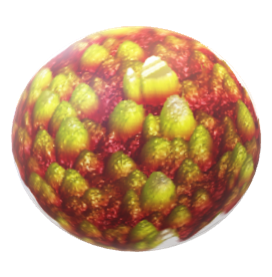Multiscale carbonized lignin nanomaterials with tailored structure for high electrochemical capacitance
The project work focuses on the development of functional nanostructured carbon material with large specific surface area and derived from sustainable materials, mainly lignin. Approaches such as electrospinning, freeze-casting as well as 3D printing can be involved. The possible applications of the carbon material can be electrodes in high-performance energy storage devices, for example, supercapacitors.
EPIC – elektro- och fotokatalys inducerat i papper
Den vanligaste metoden att framställa papper görs genom den så kallade Kraft-processen. I denna process tas olika komponenter bort från träet för att möjliggöra vidare framställning av högkvalitativ cellulosa och papper. En viktig del i Kraft-processen är den så kallade avlignifieringen. Under denna process öppnas cellulosaväggen och porer av storleken från 20 till 50 nanometer […]
Transparenta, cellulosabaserade förpackningsmaterial med goda barriäregenskaper
I mark och hav ansamlas på grund av mänsklig aktivitet stora mängder plaster, ofta från påsaroch förpackningar. I värsta fall tar det flera hundra år för naturen att bryta ner dessa plaster.För att åtgärda denna miljöförstöring räcker det alltså inte bara att vi blir bättre på att återvinnaoch slänga vårt plastskräp på rätt sätt, utan […]
Nanocellulose based filaments for advanced applications. In situ SAXS studies of wood delignification.
To develop and characterize filaments for advanced applications, i.e. green smart textiles or conductive fibers. Use a flow-focusing setup and cellulose nanofibers as a main material for preparation of filaments with high mechanical performance. To understand the fundamentals behind alignment and particle organization. To study impact of hydrolysis and delignification of wood chips on their structure […]
Sustainable added-value lignin materials for specific ions and molecules separation

Lignin is the second most abundant renewable resource from biomass, highly available in Sweden with large forest areas. The Project is aimed at the development of effective approaches for synthesis of new value-added materials from lignin. In the proposed Project the usage of different types of lignin is suggested for synthesis of novel lignin-based and […]
KAW Biocomposites
Technical objective The project is focused on materials design of biocomposites which are semi-structural, recyclable and/or biodegradable. The term “semi-structural” needs to be defined. If 30wt% glass fiber/polypropylene is selected as the reference material for substitution, it would mean that the modulus should be > 6 GPa and the tensile strength > 85 MPa. In […]
Conducting cellulose fibres and yarns for circular electronic textiles
Conducting fibres and yarns are essential components of the next generation of wearable electronics that seamlessly integrate electronic function into one of the most versatile and most widely used form of materials: textiles. Necessary requirements are a high degree of wash and wear resistance. Traditionally, colouring of cotton, viscose and lyocell fibres is done with […]
Recyclable and Creep Resistant Polyethylene – through Transient Cellulose Networks
Plastics enhance almost every aspect of human life from food consumption to medical care and even energy production. However, the often superficial use of plastics means that a large fraction of this versatile class of materials is not recycled but, instead, burned for energy recovery, buried as waste in landfills, or worst case simply discarded […]
Lignin nanoparticles

The project is aimed for development and functionalization of nanoparticles (NPs) based on technical lignins. Due to natural origin of lignin and good biocompatibility, lignin NPs (LigNPs) can find application as targeted drug delivery vehicles for future implementation in biomedicine. Within the scope of this project, we aim to develop novel multifunctional lignin nanoparticles from […]
DRIVE
DRIVE PROJEKTET – Ny kunskap för att stimulera regional tillväxt genom åtta aktiviteter för innovativa gröna transporter med engagemang från ett 30-tal företag och ett antal offentliga aktörer. SKÖRDA – Nya typer av vindytor och termoelektriska system för förnyelsebar energi från vind och markkommer att utvecklas med hjälp från industriella aktörer.LAGRA – Superkondensatorer, en typ […]
Scale-up of sustainable production of dialdehyde cellulose and dialcohol cellulose
The project is a collaboration between Chalmers, KTH, BillerudKorsnäs and TetraPak. The aim of the project is to develop a closed or semi-closed techno-economical feasible process for production of Dialdehyde cellulose, DAC and its derivatives with a target to replace plastic materials in different applications such as thermoforming, extrusion and moulding. The project will have […]
Biocomposites from fibres and nanocellulose
The project is a post-doc project within WWSC 2.0 The engineering aim brought forward in the project is to produce composities by using chemically modified fibres and nanocellulose and use these as reinforcing-structural elements in a polymer matrix. The resulting composites material must be manufactured with conventional, possible slightly modified, polymer processing techniques in order […]

